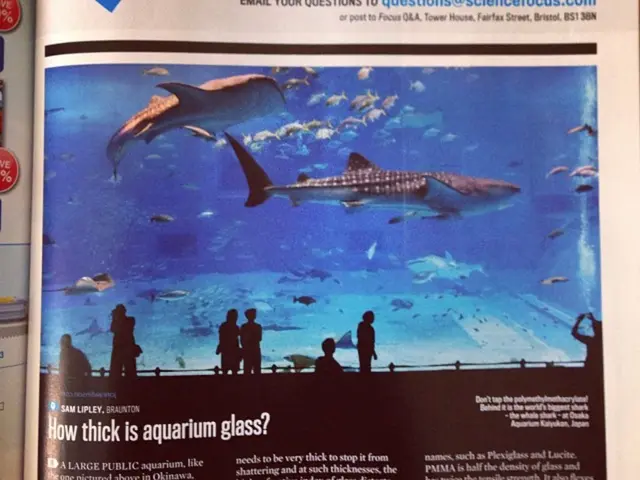Space journey's impact on an astronaut's physical condition outlined by NASA spacefarer
In the pursuit of off-planet living, astronauts undergo rigorous training that includes a unique and fascinating element - underwater travel. This training method, designed to mimic the effects of weightlessness experienced in space, has been a crucial part of astronaut preparation for decades.
The microgravity environment in space induces specific physical changes within astronauts. Muscle atrophy is one such change, with muscle mass decreasing significantly due to the lack of gravitational stress. This loss can reach as high as 20% within two weeks and up to 30% after three to six months, primarily affecting the back, neck, calves, and quadriceps.
Bone density loss is another consequence of space travel, with bones losing mass and strength at a rate of 1-2% per month. This weakening can lead to a 10% loss after six months, increasing the risk of fractures.
Cardiovascular adaptations are also common, with blood volume decreasing, and the heart pumping less efficiently. Rapid cellular changes in blood vessels and gene expression related to cardiovascular function occur during space missions.
Astronauts temporarily grow taller in space due to spinal decompression, as the spine extends without compressive force. However, other changes such as vision problems, immune system changes, and difficulties with balance and movement upon return to Earth have also been observed.
Underwater training programs aim to simulate aspects of microgravity, helping astronauts prepare for these movement challenges. The neutral buoyancy environment underwater mimics weightlessness, allowing astronauts to practice movements and work with equipment in 3D space with reduced gravitational loading. This training helps maintain familiarity with spatial orientation and motor control in conditions similar to space.
While underwater training is beneficial, it does not perfectly replicate the physiological effects like muscle and bone loss. These issues are addressed through in-space exercise and post-mission rehabilitation. Regular exercise and nutrition are essential for maintaining health in space.
NASA astronaut Nicole Stott recently discussed the physical changes that occur in the body while in space. Stott emphasised that while astronauts would like to explore places like Jupiter's moons, human biology would need to physically adapt to allow that.
During astronaut training for interstellar work, they sometimes live underwater to mimic the effects of space. Sleeping in space is reportedly the most comfortable for astronauts due to the absence of gravity. However, the heart shrinks in space, potentially leading to issues with blood flow, muscles, bones, and cardiovascular systems.
When astronauts go to the International Space Station, their spine elongates by 1.5 inches on the first day, causing temporary back pain. In space, without Earth's gravity, bodily fluids head towards the head, causing changes in muscle tone, bone density, and organ function.
In conclusion, underwater training helps simulate the movement challenges of microgravity, while the actual physiological changes occur over time in space and are addressed through in-space exercise and post-mission rehabilitation. The International Space Station remains the location where astronauts experience various body changes while in space for an extended period.





